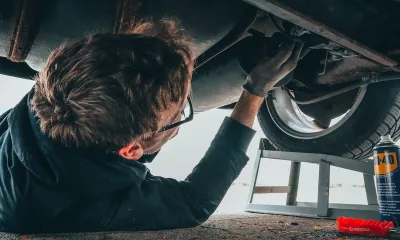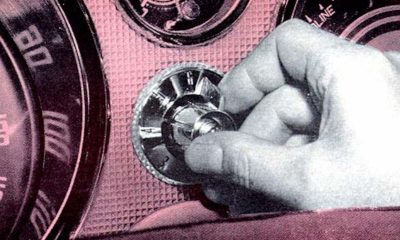
The modern camping trailer is a prime example of practical engineering. We go behind the scenes to find out how one is designed and built…
What load-shedding? Camping on the South Coast in the luxurious Bushwakka Sundowner, I’m oblivious to the national energy crisis. The battery pack, charged by a solar panel on the roof, provides energy for the LED lights, for the inverter charging my phone and the fridge-freezer keeping my drinks chilled. Gas is used in the boiler to provide hot water on demand and a gas hob in the kitchen is available for cooking. Instead, I choose to be hypnotised by the braai fire that will serve as the energy source to cook dinner.
With the popularity of SUVs at an all-time high, more city dwellers escape the rat race and visit remote locations. The camping trailer is the perfect enabler for such an adventure. We visited the Bushwakka factory in Worcester to learn what it takes to develop and build the ideal camping companion.
The requirements
South Africans love the outdoors and camping is a big part of our lifestyle. Tents are still the gateway method of experiencing the outdoors but the traditional caravan is changing. An old-fashioned one is not capable of handling off-road tracks or even corrugated dirt roads. There is the added problem of storing a bulky caravan. The answer is a compact, rugged trailer.
The design

According to Jaco Putter, production and sales manager at Bushwakka, the current designs have evolved over the last two decades; lessons learnt have been implemented in every new version. Computer-aided design (CAD) ensures each part (more than a thousand in total and 80 percent unique to the application) is accounted for and that every component fits like a puzzle. This is obvious in the final product, where all available space is efficiently utilised.
CAD ensures any interference is ironed out long before metal is cut or welded. Even the kinematics of sliding drawers and the operation of the fold-out double bed can be computer simulated. The advantage of CAD is a bill of material is created for the manufacturing process and the mass of the final product is calculated based on the density of materials used for the individual components.
Strength-of-material calculations and load tests are part of the CAD package.
Manufacturing

With a low-volume product such as the Sundowner (only five are built a month), the process is far more labour intensive than vehicle production. A workforce of 30 people produces each Sundowner (including assembly and testing) in four to six weeks, depending on the specification. The chassis forms the backbone of the trailer and is manufactured first by placing pre-cut 3CR12 corrosion-resistant stainless steel on a jig before using metal inert-gas welding to join the components. As the trailer is designed to go off-road and carry heavy loads, bracing is used in key areas.
The aluminium body can be compared with a body-in-white of a vehicle. Again, the precut sheets are placed on a jig before they are welded together. The chassis and body follow different process lines and are put together just before the painting process. Once the body is finished and joined to the chassis, it is time for painting which includes two layers of primer, two final coats and one clear coat.
Assembly

The final assembly is where the thousand individual components meet. Special shelving is used as a holding facility for the major components of each trailer, whereas fasteners and expensive electrical systems are booked out from the storeroom as the assembly process dictates.
The tent

In contrast with most other camping-trailer manufacturers, Bushwakka designs and produces its own tents. In the case of the Sundowner, around 100 m2 of canvas is used to create the bespoke tent as well as some of the interior linings and storage shelving. It is double stitched for strength and takes roughly 40 hours to finish the tent.
Sign-off testing

After the manufacturing and assembly processes, it is time for the quality inspection before the trailer is allowed to leave the factory. The checklist takes up to a week to complete as it follows all the operations its owner will expect it to perform without any glitches, including:
• Checking all the welds for imperfections.
• Testing the operation of all the auxiliary equipment.
• Checking all latches and door operation.
• Erecting and storing the tent.
• Subjecting the trailer to a water spray test.
• Towing the trailer for 10 km on a test route including braking tests.
• Completing registration and roadworthiness.
Legal towing
1. Before you consider purchasing a camping trailer, ensure you are on the right side of the law. It all hinges on the gross vehicle mass (GVM; the maximum legal mass when loaded) of the trailer and the tare (empty) mass of the tow vehicle.
| License code | Maximum unbraked trailer mass (GVM) | Maximum braked trailer mass (GVM) |
| B | 750 kg | 750 kg |
| EB | 750 kg | 3 500 kg |
2. Maximum unbraked trailer GVM must not exceed half the tow vehicle’s tare mass up to a maximum of 750 kg.
| Tow vehicle’s tare mass | Maximum unbraked trailer GVM |
| 1 000 kg | 500 kg |
| 1 500 kg | 750 kg |
| 2 000 kg | 750 kg |
3. Maximum braked trailer GVM must not exceed the tow vehicle’s tare mass up to a maximum of 3 500 kg.
| Tow vehicle’s tare mass | Maximum braked trailer GVM |
| 750 kg | 750 kg |
| 1 500 kg | 1 500 kg |
| 3 500 kg | 3 500 kg |
Energy equation

Although a trailer like the Sundowner is self-sustaining with a 135-litre water tank, gas bottles and an electrical system, the maximum off-the-grid camping time does depend on the user profile. The 12 V, deep-cycle battery system has a capacity of 170 Ah (20-hour rating). This means the battery can supply 3,4 A (170/20) or 340 W continuously for 20 hours. Ignoring Peukert’s law – that the battery capacity is inversely proportional to the discharge rate – calculating the maximum power consumption in one hour (170 A x 12 V) determines that 2,04 kW can be drawn. This is enough energy to keep two kettles running continuously for the time period.
The solar panel on the roof is rated at 285 W under ideal conditions (full sun perpendicular to the panel). If more power is drawn continuously, the battery will slowly deplete and, conversely, if less energy is consumed, the battery will receive a net charge. If we assume a maximum of eight hours of sunlight, the battery should be able to recharge from depleted to 100% state of charge in that time because 8 h x 285 W / 12 V = 190 Ah which is greater than the battery capacity of 170 A.
Clever engineering
Twenty years of engineering experience in building off-road trailers results in some inno-vative solutions.
• The wheels (including the spare) are matched to those of the tow vehicle (usually a bakkie or SUV) so that spare wheels can be used on both.
• Latches are provided to lock moving components in place; for example, the stepladder can be locked in both the upright and deployed position.
• There is LED lighting on the outside and even inside cabinets to make it easy to locate items in the dark.
• The freshwater tank can be bypassed by placing a pipe in a nearby river or dam for general water use, such as showering.
• Levelling jacks can be released and locked in steps before the final adjustments are made, to prevent excessive winding.
• Safety pins are used on critical latches to ensure they stay shut over bumpy terrain.
What a trailer costs
All this technology and luxury does come at a price. Depending on your needs, here are examples of Bushwakka product pricing.
MODEL: Bhoma off-road camping caravan/trailer

Sleeping capacity: 5
Tare: 1 300 kg
GVM: 1 700 kg
Price: from R362 000
MODEL: Sundowner off-road camping caravan/trailer

Sleeping capacity: 2
Tare: 1 100 kg
GVM: 1 500 kg
Price: from R310 000
MODEL: Safari Weekender off-road trailer

Sleeping capacity: 2
Tare: 800 kg
GVM: 1 500 kg
Price: from R185 000
Thank you to Bushwakka. For more info, visit bushwakka.co.za or call 023 342 3438.




